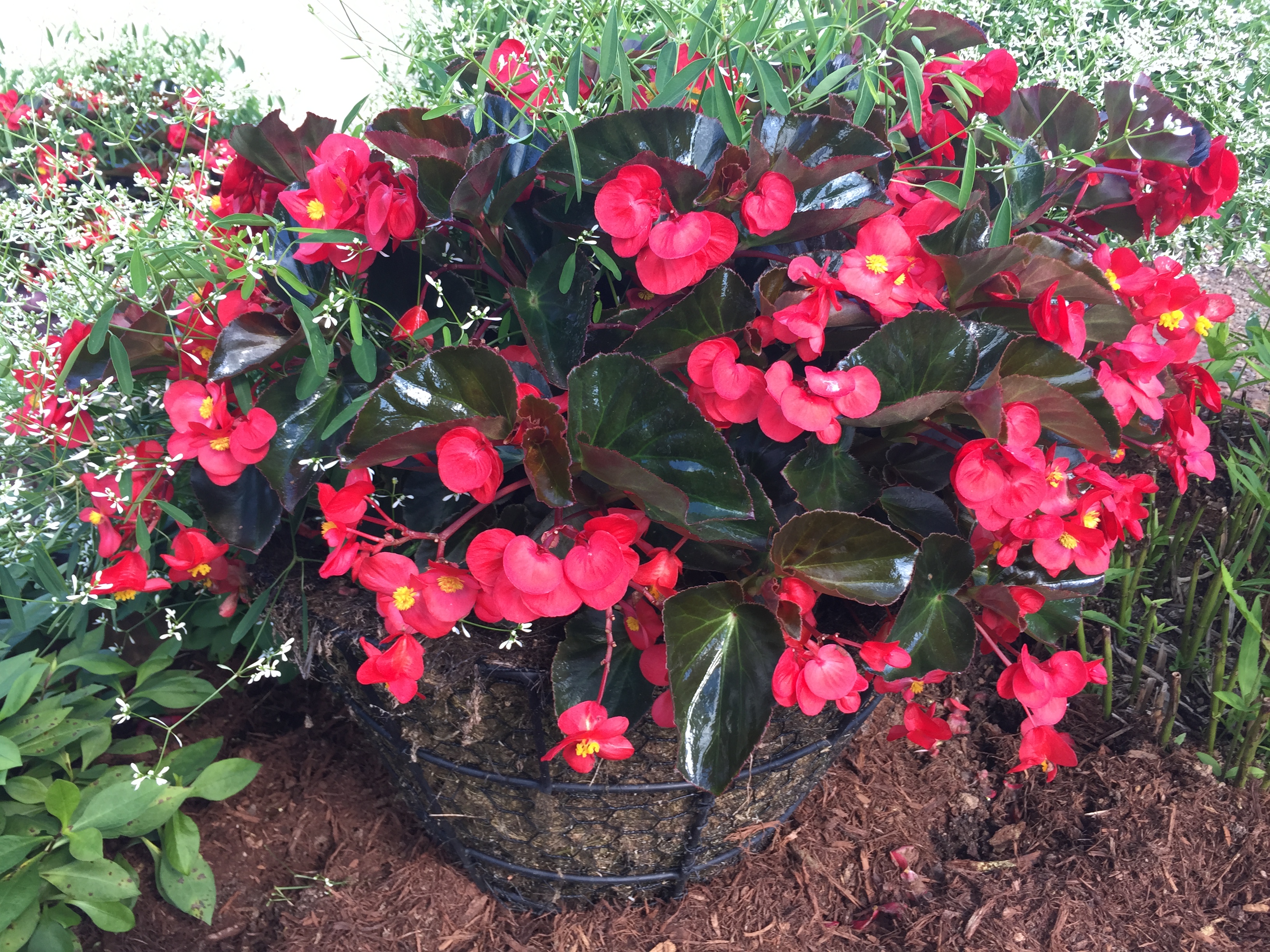Resource Library
Plant of the Week: Begonia x benariensis Big Begonias
Begonia x benariensis Big Begonias -- The Big™ Begonias are well described in that they are just like the old, familiar wax begonia but really, really big. (Image courtesy Gerald Klingaman)
Download High Resolution
In 2004, I reported on Dragonwing begonia and went into some detail describing its hybrid origins. At the time it was a major breakthrough in large bedding begonias for bold landscape plantings. I predicted its reign would be short-lived as it was replaced by something similar but wearing the “new and improved” mantra. The Big(™) Begonia series are the new, hot item in the bedding plant world that may even do their part at floral détente.
Begonias are a large, diverse group of plants scattered in the tropics throughout the world. Begonia specialists divide them into eight distinct types, with the fibrous rooted types (the wax begonias) the most common group used for bedding plants. The wax begonias(B. x semperflorens-cultorum) we grow in gardens today are the product of almost two centuries of hybridization.
Evolutionary biologists like to believe that species A begets species B which begets species C and so on down the line. Their evolutionary tree concept assumes that new, more successful species arise through natural selection from predecessor lines. It seems to me that a better model would be to liken the appearance of a new species to the flow of a massive river system such as the Mississippi. While you start with one small water course (ie one species), other tributaries dump their input into the main channel over time until the assemblage of genetic traits produces what we recognize as a modern species.
In the case of wax begonia, the starting point was B. cuccullata, which was accidently introduced into Germany from South America in 1821. In 1878 B. cucullata var. hookeri and B. schmidtiana, and B. roezlii in the 1880’s, added their genes to the stream that would eventually become the modern wax begonia. Over time, mutations were found and used that added bronze-leafed forms (France, 1890’s) to the genetic flow of the river.
In 1894, Germany’s Benary Seed Company, the developers of the Big(™) Begonias of today, released their first hybrid seed to the gardening world. The company, and understandably so, favors the B. x benariensis name for these hybrids, but most others lump them under the B. x semperflorens-cultorum name. The Big(™) Begonias from Benary, and a competing line the Whooper(™) Series from Ball Seed Company, appear to use polyploidy (increasing the number of genes in a cell) techniques to increase size characteristics of the plants.
These new, bigger begonias look a lot like the older, more familiar wax begonias, only larger. Blooms are 3-4 times – often as much as 2 ½ inches across – larger than standard wax begonias and currently available in pink and red colors. The leaves are available in bronze or green forms and are similar in shape to the wax begonia but larger in size. Plants grow to 20 inches tall and wide instead of the more common 8-10 inches of the originals.
The Big(™) Begonias are adding to a kind of floral détente because flower beds using these big, bold plants are seen in the front of the White House, Windsor Castle in England, near the Kremlin in Moscow and in Tiananmen Square where the smiling face of Chairman Mao overlooks the display.
These plants are ideally suited for use in full sun or light shade in ground beds or in containers. They are easily grown in any well-drained, organic matter rich soil with moderate fertility. For best results keep the plants uniformly moist during the summer and fertilize monthly during the growing season to keep them growing. Plants may be grown from seed but growing begonia from seed is best left to professional growers. These big hybrids are early to bloom and are available from nurseries along with most mid-season bedding plant offerings.
